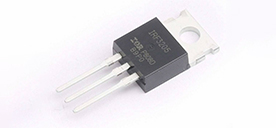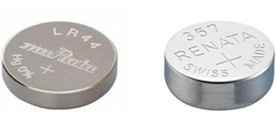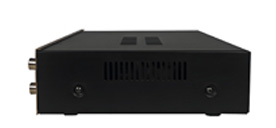CR1620 Batteries: Features, Uses, and Storage Best Practices
2024/5/24 16:19:51
Views:
The way we power electronics has been completely transformed by lithium batteries, which offer a dependable and long-lasting energy source for everything from tiny electronics to medical equipment. The CR1620 lithium coin cell battery stands out from the others due to its special blend of performance, capacity, and size. This guide delves into the specifics of the Murata Electronics CR1620, covering its datasheet, equivalent batteries, applications, and answering some of the most frequently searched questions about this battery type.
Overview of the CR1620 Battery
The CR1620 is a lithium non-rechargeable button/coin cell battery commonly used in small electronic devices. It is perfect for situations where space is at a premium due to its small size and high energy density. It is a lithium-manganese dioxide (Li-MnO2) battery, which is renowned for its stability and long shelf life, as indicated by the "CR" designation.
Dimensions of the CR1620 Battery
Specifications of the CR1620 Battery
- Nominal Voltage: 3.0V
- Capacity: Approximately 70mAh
- Dimensions:
- Diameter: 16.0mm
- Height: 2.0mm
- Weight: About 1.2 grams
- Operating Temperature Range: -20°C
- Self-Discharge Rate: Less than 1% per year at room temperature
- Chemistry: Lithium Manganese Dioxide (Li-MnO2)
- Termination Type: Flat
- Standards Compliance: IEC 60086-4
Key Features of the CR1620 Battery
The CR1620 lithium coin cell battery is a popular choice for various applications due to its unique set of features that offer reliable performance and long-lasting power. Here are the key features that make the CR1620 battery a preferred option for many devices:
1. Elevated Density of Energy
With respect to its compact size, the CR1620 battery offers a significant amount of power thanks to its excellent energy density. This specific feature is highly useful for compact devices that require a long-lasting battery.
2. Stable Voltage Output
One of the standout features of the CR1620 battery is its stable voltage output. The battery maintains a consistent voltage of 3.0V throughout its discharge cycle, ensuring reliable performance for sensitive electronic devices.
3. Extended Shelf Life
When kept at normal temperature, the cr1620 3 volt battery has an amazing shelf life of up to 10 years because of its low self-discharge rate of less than 1% annually. For devices that are used seldom or as backup power sources, this makes it a great option.
4. Broad Temperature Range of Operation
The CR1620 battery operates effectively in a wide temperature range, starting at -20°C. It may be used in a multitude of circumstances, from heated indoor settings to chilly outdoor ones, thanks to its broad operating temperature range.
5. Lightweight and Compact
With a diameter of 16.0mm and a height of 2.0mm, the CR1620 battery is compact and lightweight, weighing only about 1.2 grams. Its compact size allows it to fit into tight spaces, making it ideal for little electrical equipment.
6. Excellent Safety and Reliability
The batteries cr 1620 is made with a high level of safety and dependability in mind. Under typical operating conditions, its lithium-manganese dioxide chemistry guarantees reliable performance and lowers the possibility of leakage, rupture, or explosion.
7. Cost-Effective
Given its longevity and reliable performance, the CR1620 battery is a cost-effective power solution. Its extended lifespan saves consumers money and effort by lowering the need for replacements.
8. Simple to Change and Install
The CR1620 battery is made to be installed and replaced with ease. Its standard size and flat termination make it compatible with a wide range of devices, and it can be easily swapped out when needed.
9. Environmentally Friendly Disposal Options
While all batteries contain materials that require proper disposal, many manufacturers offer recycling programs for lithium batteries like the CR1620. These programs help ensure that used batteries are disposed of in an environmentally responsible manner.
The CR1620 battery's combination of high energy density, stable voltage output, long shelf life, and wide operating temperature range makes it a versatile and dependable power source for numerous applications. Its lightweight and compact design, coupled with high reliability and safety, further enhances its appeal for both manufacturers and consumers.
Equivalent of the CR1620 Battery
Here is a detailed description of the equivalent batteries for the CR1620:
1. DL1620 - Manufactured by Duracell, the DL1620 is a 3V lithium coin cell battery. It shares the same diameter (16mm) and height (2mm) as the CR1620, making it a suitable replacement in various electronic devices.
2. ECR1620 - Produced by Energizer, the ECR1620 is another 3V lithium coin cell battery equivalent to the CR1620. It is designed to provide similar performance and compatibility, meeting the same size requirements.
3. BR1620 - Panasonic manufactures the BR1620, which, while having a slightly different chemistry, is often considered interchangeable with the CR1620 due to its 3V voltage output and similar physical dimensions (16mm diameter, 2mm height).
4. KCR1620 - Kodak's KCR1620 is a 3V lithium coin cell battery that matches the size and voltage specifications of the CR1620, offering a reliable alternative for various electronic applications.
5. LJ1620 - Mitsubishi produces the LJ1620, another 3V lithium coin cell battery equivalent to the CR1620. It is designed to fit the same size requirements, providing comparable performance and reliability.
When selecting an equivalent battery for the CR1620, it's crucial to ensure that the replacement meets the necessary specifications, including voltage, diameter, and height, to ensure proper compatibility and performance in your electronic device.
Applications of the CR1620 Battery
The 1620 battery is widely used in various applications due to its compact size and reliable performance. Key applications include:
1. Medical Devices
- Glucose Monitors: Provides consistent and reliable power for accurate readings.
- Thermometers: Ensures precise temperature measurement with long-lasting performance.
2. Technology Wearables
- Fitness Trackers: Powerful little gadgets that track health indicators and physical activity.
- Smartwatches: Supports various functionalities including timekeeping, notifications, and health monitoring.
3. Automotive
- Key Fobs: Powers remote keyless entry systems, ensuring reliable performance for locking and unlocking vehicles.
- Tire Pressure Monitors: Boost vehicle safety by powering sensors that track tire pressure.
4. Consumer Electronics
- Calculators: Used in compact calculators for reliable, long-term performance.
- Digital Watches: Powers small digital watches, ensuring accurate timekeeping.
Detailed Analysis of CR1620 Battery Discharge Characteristics
Discharge Characteristics
The discharge characteristics of a battery are crucial for understanding its performance under various conditions. This includes how the battery behaves under different loads, temperatures, and storage conditions. It also examines the relationship between discharge load and operation voltage, as well as the impact of pulse loads on discharge capacity. By analyzing these factors, we can optimize the battery's usage for various applications, ensuring reliable and efficient energy supply.
Discharge Characteristics on Load
The discharge characteristics of the CR1620 battery under load highlight how the battery's voltage and capacity are affected by the current drawn by the device. Typically, the battery maintains a stable voltage output until a significant portion of its capacity is depleted.
- Constant Load Discharge: When discharged under a constant load, the CR1620 battery shows a relatively flat discharge curve. This means that the voltage remains close to its nominal value (3.0V) for most of the discharge cycle, only dropping sharply near the end of its life.
- Low vs. High Load: At lower loads (e.g., 0.1mA), the battery can sustain its voltage for a longer duration, providing extended use. Under higher loads (e.g., 1mA), the voltage drops more quickly, reducing the overall usable capacity.
Discharge Characteristics on Temperature
Temperature has a significant impact on the discharge characteristics of the CR1620 battery. The battery's performance varies with changes in ambient temperature, affecting both voltage and capacity.
- Low Temperature: At temperatures below -10°C, the battery's discharge capacity decreases, and the voltage drops more quickly. This is due to slower chemical reactions within the cell, which impede the flow of current.
- Room Temperature: At standard room temperature (20°C to 25°C), the CR1620 performs optimally, delivering its full capacity with stable voltage output throughout the discharge cycle.
- High Temperature: At elevated temperatures (above 50°C), the battery may show an initial increase in capacity due to faster chemical reactions. On the other hand, extended exposure to high temperatures may cause faster deterioration and a shorter lifespan.
Discharge Load vs. Operation Voltage (Discharge Depth 40%)
Examining the relationship between discharge load and operation voltage at a 40% discharge depth provides insights into how the battery voltage responds to different current demands.
- Light Load (0.1mA): At a 40% discharge depth, the operation voltage remains high and stable, close to the nominal 3.0V.
- Moderate Load (0.5mA): The voltage begins to show a slight decline but remains relatively stable, indicating good performance under moderate load conditions.
- Heavy Load (1mA): The operation voltage drops more noticeably at 40% discharge depth, reflecting the increased internal resistance and reduced efficiency at higher current draws.
Discharge Load vs. Discharge Capacity
The discharge capacity of the CR1620 battery varies with different loads. Higher loads result in reduced discharge capacity due to increased internal resistance and heat generation.
- Low Load (0.1mA): The battery can deliver close to its full rated capacity (70mAh) under low load conditions.
- Moderate Load (0.5mA): The capacity is slightly reduced, but the battery still performs efficiently.
- High Load (1mA): The discharge capacity drops more significantly, as higher current draws increase the rate of chemical depletion and internal resistance.
Discharge Characteristics on Pulse Load (Discharge Depth 40%)
Pulse loads are often seen in devices that require short bursts of high current. The CR1620 battery's ability to handle pulse loads is crucial for applications like key fobs and medical devices.
- Pulse Load Performance: At a 40% discharge depth, the battery can handle pulse loads with minimal voltage drop, thanks to its low internal resistance and stable chemistry.
- Recovery: After a pulse load, the voltage quickly recovers to its nominal value, demonstrating the battery's ability to deliver consistent power even under fluctuating load conditions.
Storage Characteristics
The storage characteristics of the CR1620 battery determine how well it retains its charge and overall performance over time when not in use.
1. Self-discharge rate and shelf life
- Shelf Life: When kept at normal temperature, the CR1620 battery has an extended shelf life of up to ten years. Its extended lifespan is attributed to its low self-discharge rate, which is less than 1% annually.
- Self-Discharge Rate: The low self-discharge rate ensures that the battery retains most of its capacity even after extended periods of non-use, making it ideal for emergency devices and infrequent use applications.
2. Temperature Effects on Storage
- Room Temperature Storage: Optimal storage conditions for the CR1620 battery are at room temperature (20°C to 25°C), where it retains maximum capacity and longevity.
- Cold Storage: Storing the battery at lower temperatures (e.g., in a refrigerator) can further reduce the self-discharge rate. But before using the battery, it's crucial to let it get to room temperature to avoid condensation and any short circuits.
- High Temperature Storage: Prolonged storage at high temperatures (above 40°C) can accelerate self-discharge and degrade the battery's materials, reducing its overall lifespan and capacity.
3. Impact of Humidity on Storage
Humidity can also affect the storage characteristics of the CR1620 battery:
- Low Humidity: Storing the battery in a dry environment helps maintain its integrity and prevents corrosion of the terminals.
- High Humidity: Too much humidity can allow moisture to enter the system, which can result in corrosion and even short circuits. It is essential to store batteries in a dry, sealed container if the ambient humidity is high.
Strong discharge and storage capabilities of the 1620 coin battery make it appropriate for a variety of uses. Its stable voltage output, high energy density, and long shelf life ensure reliable performance across various conditions. Understanding these characteristics allows for optimal usage and storage, enhancing the battery's effectiveness and longevity in your devices. Whether for low-drain applications like watches or more demanding uses like medical devices and key fobs, the CR1620 battery delivers consistent, reliable power.
Comparing CR1620 with Other Coin Cell Batteries
1. CR2025 and CR2032
The CR1620 is often compared with the CR2025 and CR2032 batteries, which are also common lithium coin cells. The primary differences lie in their dimensions and capacity:
- CR2025: 20mm diameter, 2.5mm height, approximately 150mAh capacity.
- CR2032: 20mm diameter, 3.2mm height, approximately 220mAh capacity.
While the CR2025 and CR2032 offer higher capacities, the CR1620's smaller size can be advantageous for applications where space is at a premium.
2. BR1620 vs. CR1620
The BR1620, a lithium carbon monofluoride battery, offers a similar size and capacity to the CR1620 but with some differences in performance:
- Operating Temperature Range: BR1620 has a broader range, typically -30°C.
- Self-Discharge Rate: BR1620 has an even lower self-discharge rate, making it better for extremely long-term storage.
Choosing the Right Battery for Your Device
It is crucial that you take your device's individual requirements into account when choosing a battery. The ideal battery for your needs depends on a number of factors, including voltage, capacity, size, and operating temperature range. The CR1620 is frequently a great option for gadgets that need a portable power supply with dependable performance.
Best Practices for Storing and Handling CR1620 Batteries
1. Storage
- Temperature: Keep batteries in a dry, cold place to increase their shelf life.
- Avoid Extreme Conditions: Keep away from extreme temperatures and humidity.
- Original container: To avoid physical damage and short circuits, keep batteries in their original container.
2. Managing
- Prevent Short Circuits: Keep the terminals away from any metal objects.
- Proper Disposal: Follow local regulations for battery disposal to ensure environmental safety.
- Verify Expiration Date: To guarantee optimum performance, confirm the battery's expiration date before to use.
Innovations and Future Trends in Coin Cell Batteries
The science underlying coin cell batteries is always changing. The main goals of innovations are to increase safety features, increase energy density, and prolong battery life. The latest advancements include:
Solid-State Electrolytes: Provide higher energy density and safety.
- Rechargeable Coin Cells: Providing the convenience of recharging while maintaining compact size.
- Enhanced Chemistries: Developing new materials to improve performance and reduce environmental impact.
Frequently Asked Questions
1. How long does a CR1620 battery last?
A CR1620 battery's lifespan varies depending on the gadget and how it is used. In low-drain devices like watches and calculators, it can last up to several years. In higher-drain applications, the lifespan will be shorter. Typically, the battery can last 2-3 years in standard applications.
2. Can CR1620 batteries be recharged?
No, CR1620 batteries are not rechargeable because they are primary cells. Attempting to recharge them can cause leakage, rupture, or even an explosion. For rechargeable options, consider using lithium-ion coin cells specifically designed for recharging.
3. What is the shelf life of a CR1620 battery?
When kept at normal temperature, the remarkable shelf life of the CR1620 battery is up to ten years. Its low self-discharge rate ensures it retains most of its charge over long periods, making it suitable for emergency devices and infrequent use applications.
4. Are there environmental concerns with disposing of CR1620 batteries?
Yes, like all lithium batteries, CR1620 batteries should be disposed of properly. They include potentially hazardous materials that could damage the environment if disposed of incorrectly. To guarantee the safe disposal and recycling of materials, many areas offer battery-specific recycling programs.
Conclusion
For a variety of uses, the CR1620 battery offers a dependable and adaptable power supply. Numerous electronic gadgets choose it because of its long shelf life, consistent voltage output, and small size. If you understand the specifications, operation, and suitable uses of the batteries for your devices, you can make informed decisions when selecting them. For powering wearables, consumer gadgets, or medical devices, the CR1620 provides stable performance to match your demands.
Related Information
-
-
Phone
+86 135 3401 3447 -
Whatsapp

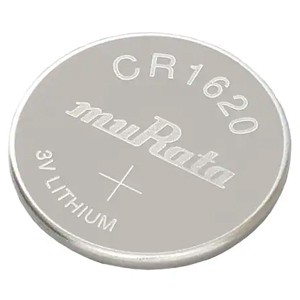
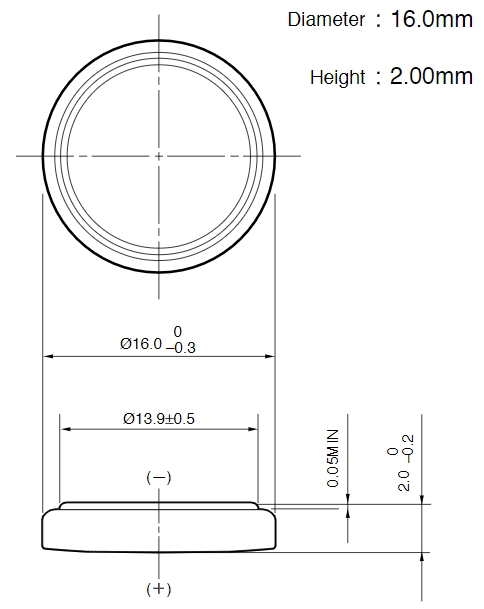

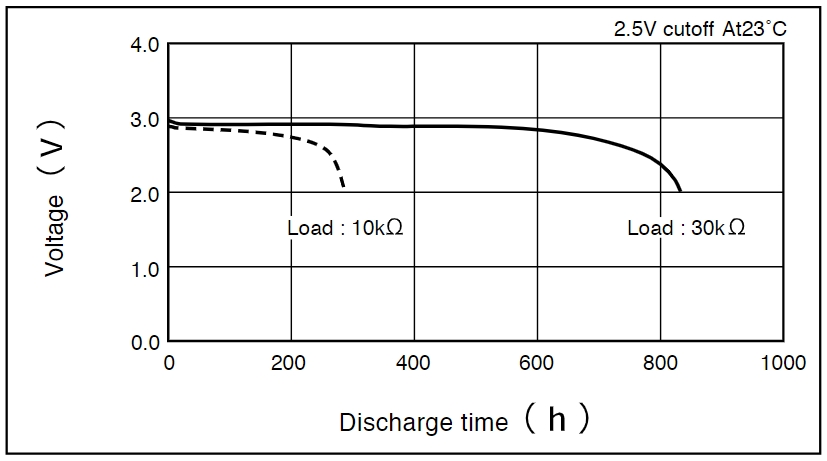
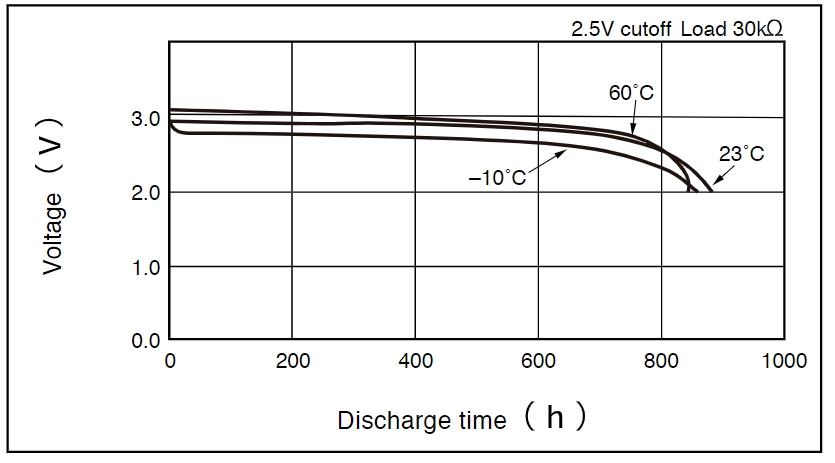
.jpg)

.jpg)

